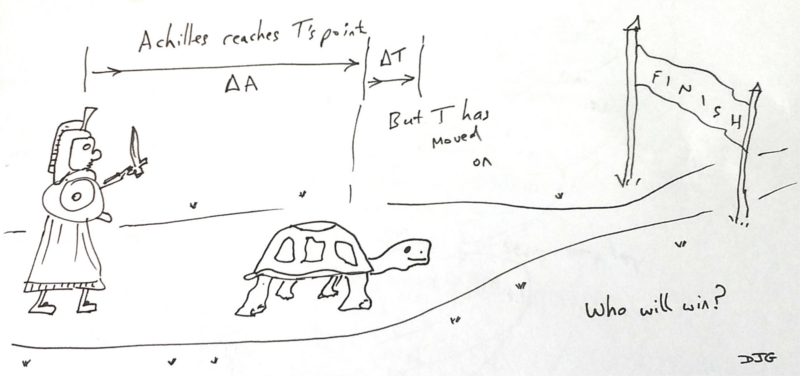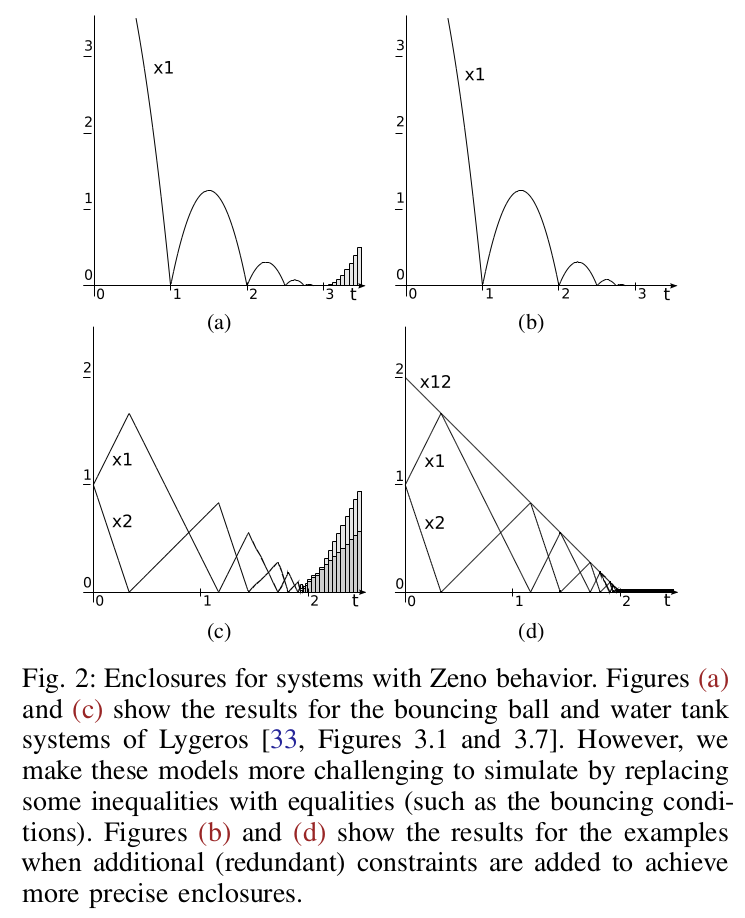
Analogue and Mixed simulation is not examinable in 16/17.

Problem: Remember Zeno's paradox, with Achilles and the tortoise? “And so you can never catch up,” the Tortoise concluded sympathetically. AMS simulations often suffer from unintentionally revisiting that story.
A Zeno hybrid system model is a hybrid system with an execution that takes an infinite number of discrete transitions during a finite time interval.
// AMS simulation of of a ball bouncing -> infinite bounce frequency!
module ballbounce();
real height, velocity;
analog initial begin height = 10.0; velocity = 0.0; end
analog begin // We want auto-timestep selection for this FDTD
height <+ -velocity; // Falling downwards
velocity <+ 9.8; // Acceleration due to gravity.
end
// We want discrete event triggered execution here
always @(cross height) begin
velocity = -0.9 * velocity; // Inelastic bounce
height = 0.000001; // Hmmm some fudge here!
end
endmodule
// NB: Precise syntax above may not be accepted by all tools.
»Enclosing the Behavior of a Hybrid System up to and Beyond a Zeno Point: Michael Konecny et al|

A simple heuristic on the minimum timestep competes directly with adaptive timestep tuning needed to accurately model critical inflection points. Zeno suppression research is ongoing.
Note, the ball bounce example does not involve any nodal equations but the problem is fairly common with real-world examples that do tend to have wire and pipes splitting and joining.
| 40: (C) 2008-17, DJ Greaves, University of Cambridge, Computer Laboratory. | |